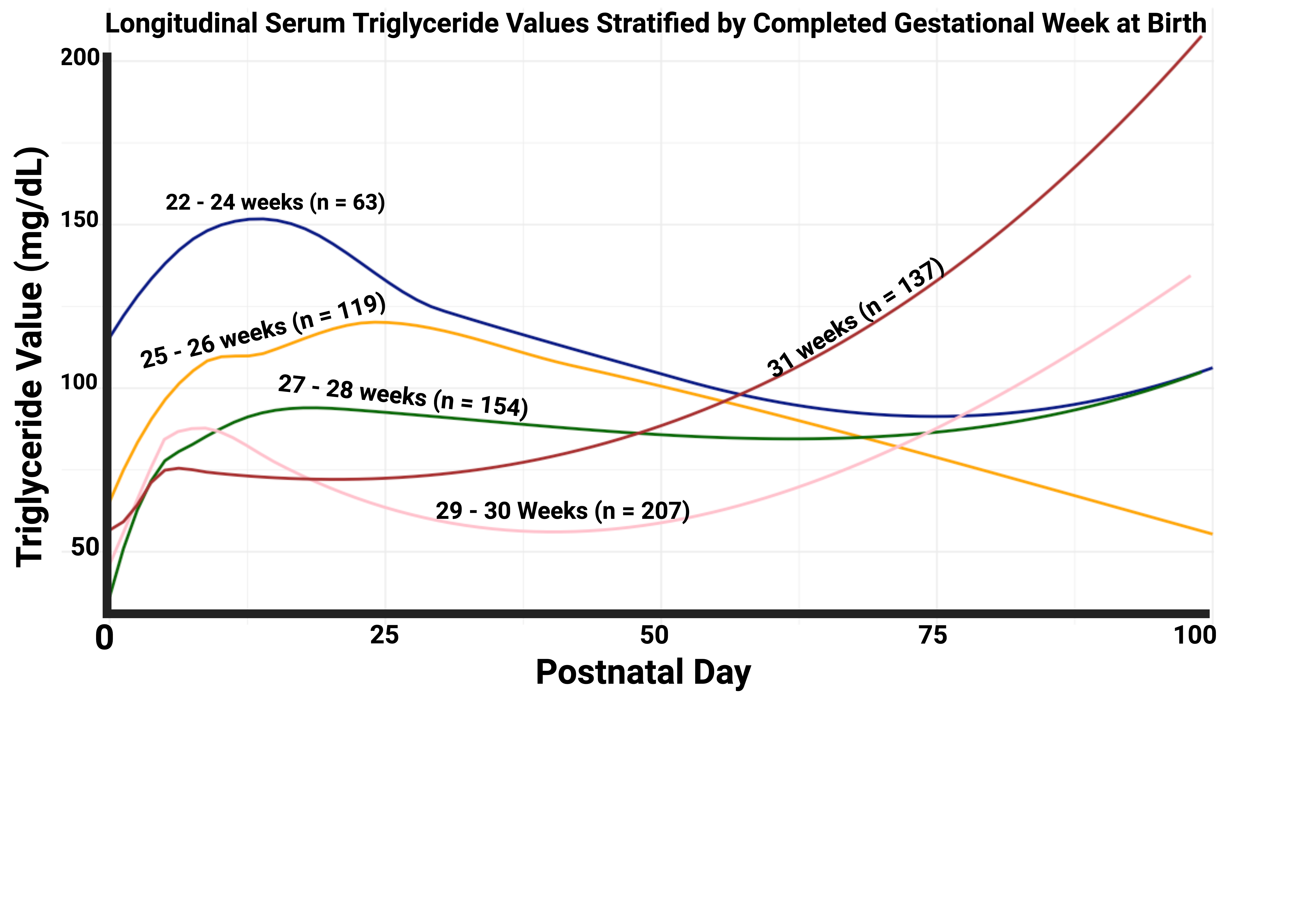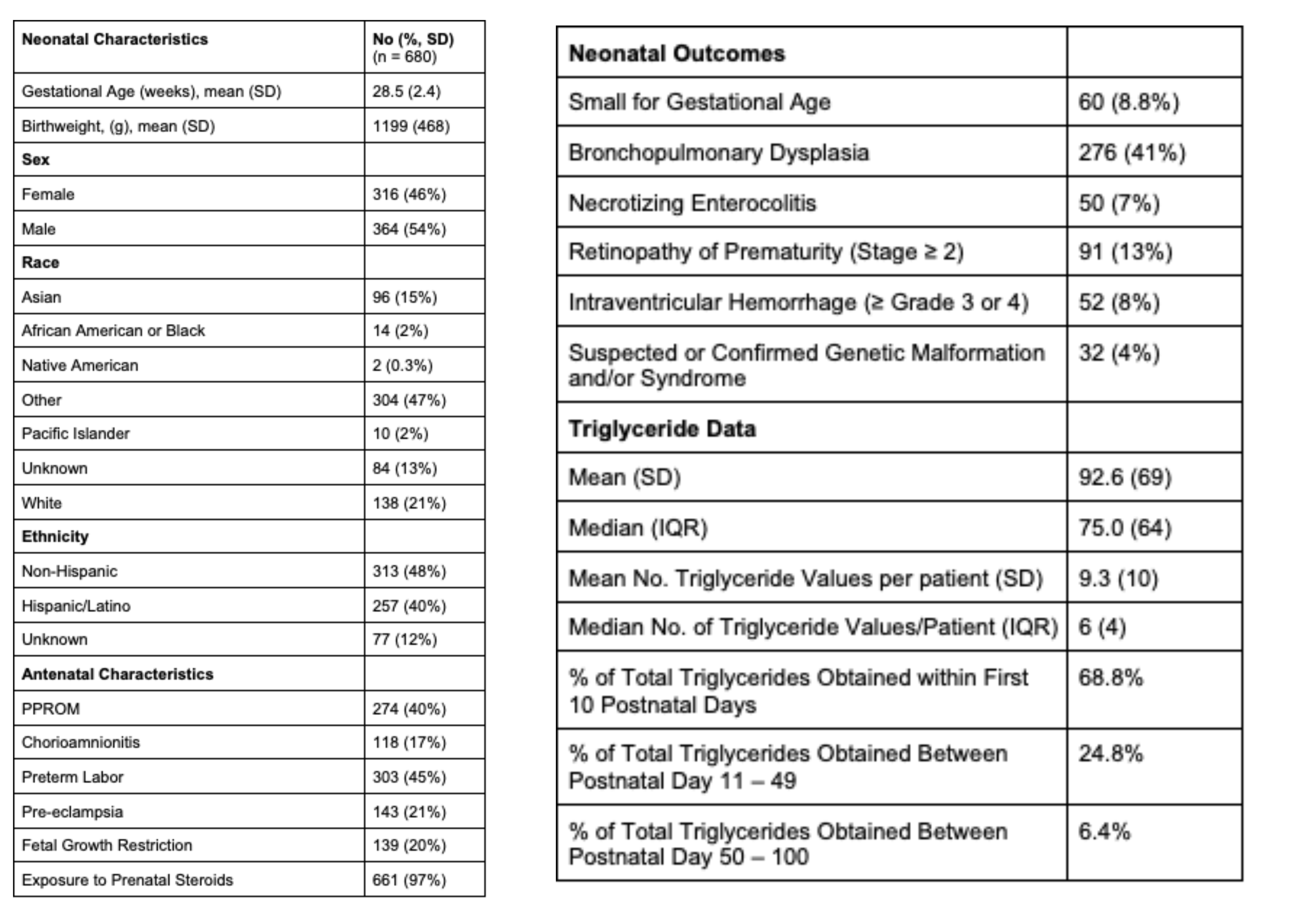Neonatology
Session: Neonatal Fetal Nutrition & Metabolism 4: Nutrition in the NICU
454 - Triglyceride Profiling in Preterm Infants Reveals Dynamic Age-Dependent Differences
Sunday, May 5, 2024
3:30 PM - 6:00 PM ET
Poster Number: 454
Publication Number: 454.1934
Publication Number: 454.1934

Jonathan Reiss, MD
Instructor
Stanford
Palo Alto, California, United States
Presenting Author(s)
Background: Lipids are critical for numerous biologic and physiologic processes in the preterm neonate. Serum triglycerides are routinely measured in this vulnerable population as a proxy for lipid tolerance. It is often unclear how clinicians should interpret these values and whether they may have broad biological, translational, or clinical significance. We investigated serum triglyceride levels for gestational-age specific cohorts of preterm infants and for repeated measured levels in an effort to describe potential variability in levels by age and time.
Objective: Our objective was to define postnatal serum triglyceride levels longitudinally for infants born < 32 weeks' gestational age.
Design/Methods: This was a retrospective observational study of all infants born at < 32 weeks’ gestational age admitted to the neonatal intensive care unit at Lucile Packard Children’s Hospital between April 2014 - December 2021. Descriptive analyses were conducted in R statistical computing framework, version 6.2. Serum triglyceride levels were visualized using locally estimated scatter plot smoothing over the first 100 postnatal days, stratified by gestational age. The study was approved by the Stanford University institutional review board.
Results: Included were 759 infants born < 32 weeks’ gestational age and admitted to the neonatal intensive care unit. 680 infants had available clinical data recorded and included in the descriptive analysis. All included infants received either Intralipid 20% or SMOFlipid 20% emulsions. The mean (SD) gestational age was 28.5 weeks (SD = 2.4). Triglycerides rose within the first few postnatal days and subsequently plateaued by postnatal day 25. Infants born < 25 weeks’ gestational age had the highest serum triglyceride levels over the first 25 postnatal days compared to all other gestational age strata. By postnatal day 50, all gestational age strata demonstrated a similar triglyceride profile.
Conclusion(s): Longitudinal profiling using a routinely collected clinical laboratory test reveals age-dependent differences in serum triglyceride values that are greatest in the first 3 weeks of postnatal life. Such age-specific differences may reflect the spectrum of metabolic immaturity in circulating and tissue-specific lipases and associated transport proteins that govern lipid absorption and metabolism. This may have important translational and clinical implications for sequelae unique to preterm infants that are influenced by the combination of age and lipid metabolism, such as glucose dysregulation, hyperbilirubinemia, bronchopulmonary dysplasia, and other acquired disorders of prematurity.


